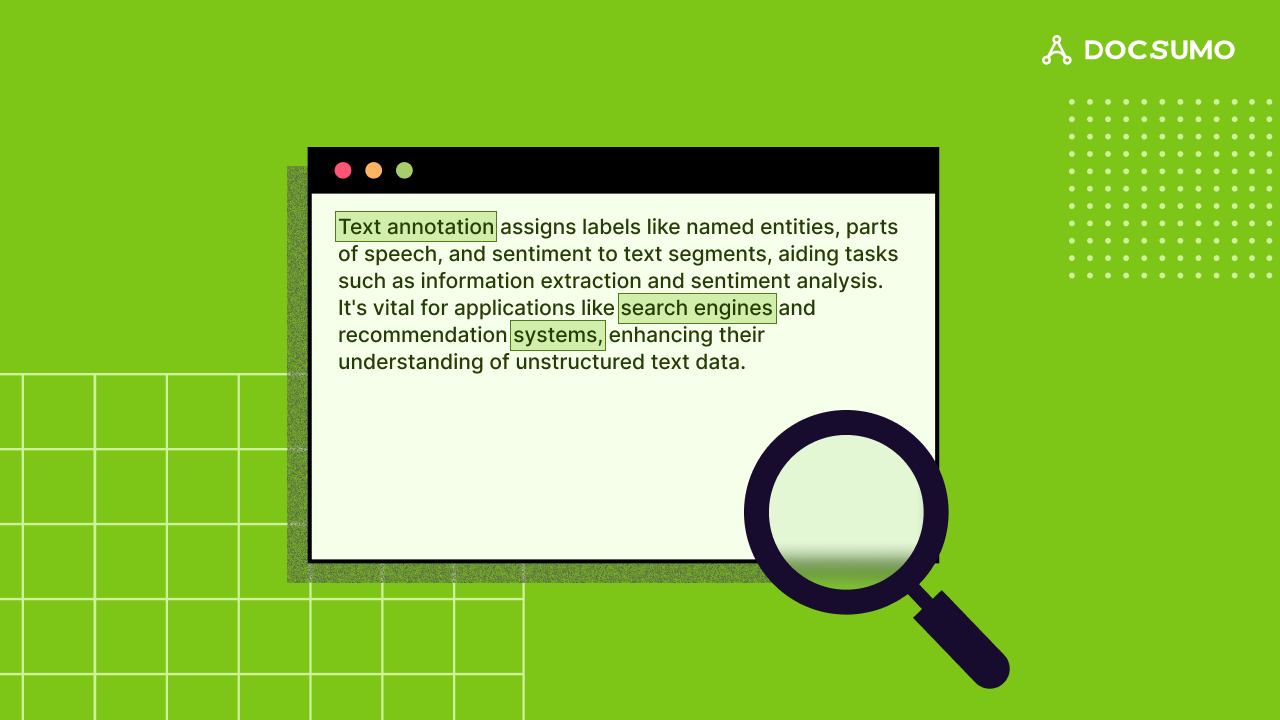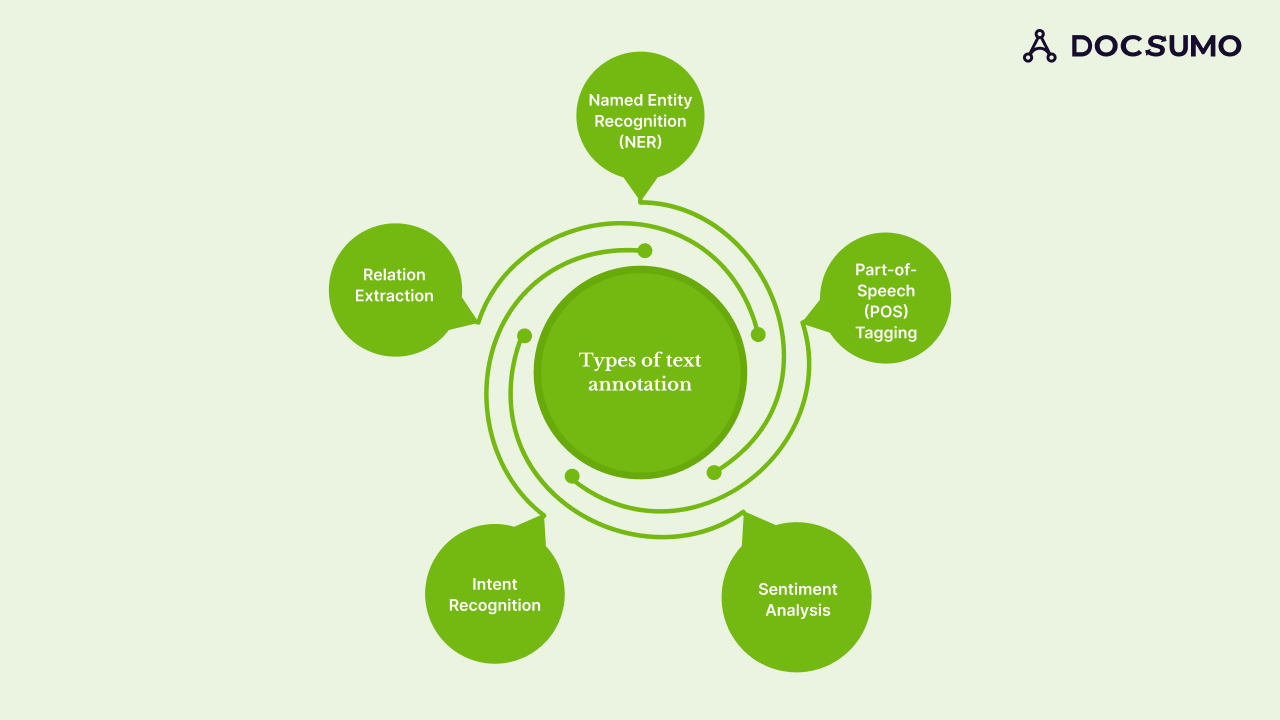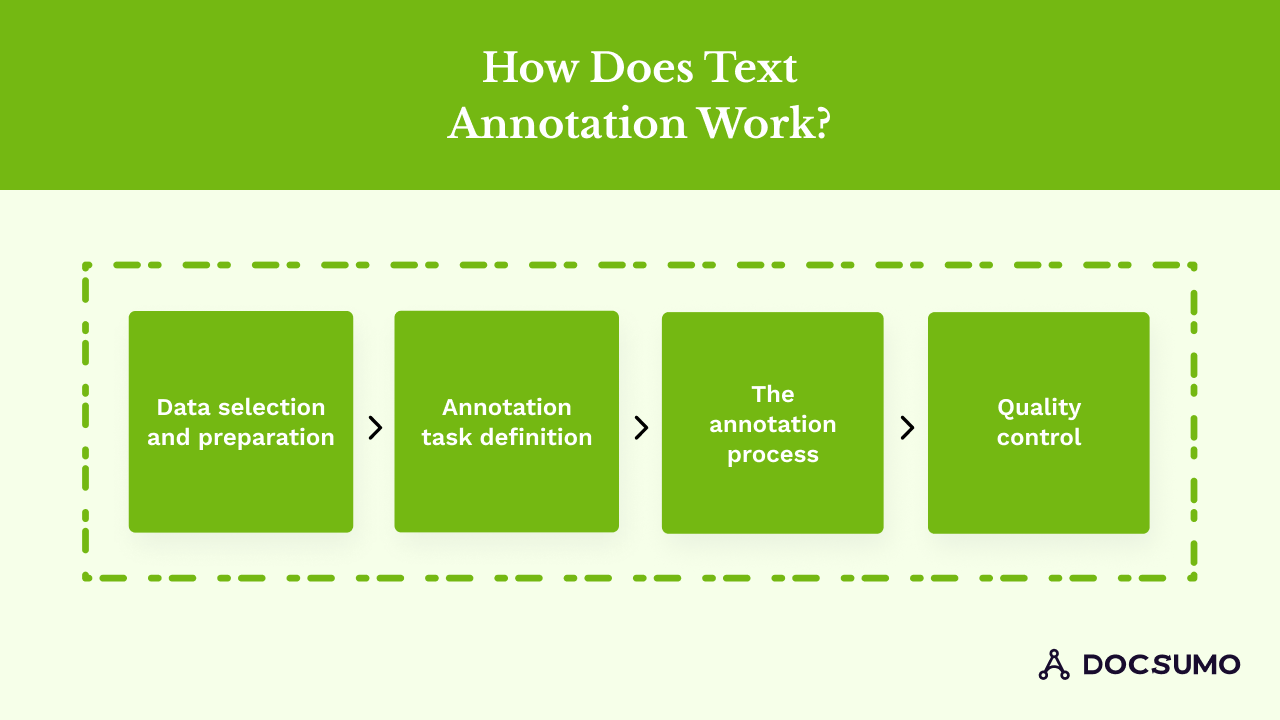Suggested
What is Data Ingestion: Definition, Key Components, Tools, Benefits

An enormous amount of textual data is generated over the internet every day. According to a Statista study, Nearly 9 billion SMS were sent in the year 2023 in Portugal alone. Another study suggests that In the first four months of 2024, about 10 billion emails were sent daily in the US
Textual data is important for businesses as it helps them analyze and make better decisions. For example, capturing company names and line item data from invoices or understanding the customer's emotion behind a product or service offering can help you process documents faster and analyze customer feedback appropriately.
The large amount of textual data generated over the Internet is primarily unstructured data. A paper published by Seagate suggests that 163 zettabytes of data on the Internet will be unstructured by 2025, which nearly amounts to 80% of the data on the Internet.
Text annotation helps label and classify unstructured data generated across public Internet domains. By tagging and classifying textual data, text annotation can help businesses automate their services in various ways. One example is a bank's application of a smart chatbot that can understand customers’ text queries and provide appropriate automated responses.
Text annotation involves adding footnotes and comments, highlighting parts of text, and classifying them into large parts of the text. It helps to summarize texts and highlight important points within the large parts of texts making it easy for readers to digest complex information.
The meaning of text annotation slightly differs between artificial intelligence and machine learning. It refers to a process wherein large parts of text are labeled to train data for machine learning. Highlighting and understanding the grammar structure, parts of speech, keywords, emotions, sentiments, and so on is the core reason to annotate textual information.
Natural language processing (NLP) combines interpreting textual data with pre-processing methods. NLP helps contextually understand and interpret textual information accordingly, making it readable for machines.

What text annotation types are designed for different use cases? These methods consider how the extracted data has to be labeled and interpreted.
Named Entity Recognition (NER) is a text annotation method that plays a vital role in various natural language processing applications. This method involves identifying and labeling various named entities, such as places, people, dates, company names, etc.
By classifying and labeling these named entities accurately, the NER-enabled machine can extract crucial information from the documents and better understand the extracted text. The Parts-of-Speech (POS) Tagging text annotation method can also support the NER by understanding name entities with the context of the sentence or a phrase.
Part of Speech (POS) tagging is a text annotation method that grammatically labels words in a text or phrase. It categorizes text as a noun, verb, adjective, adverb, etc. Through POS Tagging, machines can better understand a phrase or sentence's grammar structure and meaning.
This resolves the issue of surface-level data extraction wherein data is captured not at face value but by understanding the deeper context of grammar structure.
Sentiment analysis is a text annotation method that determines the emotional tone of the text. Text is labeled as positive, negative, neutral, and so on. Businesses use sentiment analysis to gauge people's attitudes toward their product or service.
Sentiment analysis is important in brand monitoring and reputation management. It helps you understand public opinion, social media trends, and feedback on offerings.
The intent recognition text annotation method determines the intent behind a text—whether it is a command, request, complaint, suggestion, or feedback.
Intent recognition takes a given query as input and associates the text data and expression with a given intent. For example, during a telephone prompter in an automated call, the model learns from speech data based on key terms—-what the customer is looking for, such as “Pay my bills” or “speak to a representative.”
Relation extraction is a method of text annotation that determines the relationship between two named entities. It helps to understand the data of the named entity contextually and determines how the two named entities are related to one another.
For example, the phrase “New York is in the US” states a “is in” relationship between New York and the US. This can also be denoted in triples - New York is in, the US. Let’s take another example: "John Doe works at XYZ Inc.” states a “work at” relationship between John Doe and XYZ Inc.
Text annotation uses a variety of techniques to provide structure to unstructured textual data.
Humans add labels or tags to certain text parts in manual text annotation. This technique is considered to be more precise than other text annotation techniques. It uses predefined standards and rules to apply the labels to the text, which can be used for various natural language processing (NLP) and machine learning tasks.
In the active learning text annotation technique, machine learning models select data samples to annotate. A small subset of large and challenging data samples is used to learn and label parts of these texts.
Active learning is scalable and can be replicated for large projects with limited resources while maintaining the accuracy of labeling data.
In crowdsourcing text annotation technique, the annotation is outsourced to a pool of contributors on the internet. Platforms like ScaleHub and CrowdFlower have huge amounts of annotated texts distributed across various contributors.
It is an efficient way to scale and annotate data that is simple and easy to categorize using specific guidelines.

The first step in the text annotation process is to choose relevant textual data that must be interpreted through machine learning.
The textual data that needs to be annotated must be relevant to the domain for which you need to analyze textual information. The data is cleaned by removing unwanted texts and symbols, such as punctuations, emoticons, and so on.
It is important to have textual data selected and prepared in advance to clarify the main objective of text annotation and its application.
The second step is to define the type of annotation needed. There are numerous types of text annotations, such as sentiment analysis, which determines the emotion of a text (anger, sad, happy, sarcastic, etc.), or named entity recognition, which can label text into different categories (person, place, date, etc.).
Different text annotation methods impact the classification of texts as they will label the text based on contextual understanding of the defined text annotation method.
The third step in the text annotation process is to label the parts of the text with the right interpretations and contextual understanding.
Keyphrasing, language identification, and document classification are different ways to label texts. Other text parts are tagged and classified based on the type of text annotation method defined.
Quality check and control is the last and most crucial step in the text annotation process. The accuracy of text annotation on selected textual data is cross-checked, reviewed, and validated through various validation and review methods such as if condition methods.

Surface-level data extraction without understanding what the textual data means on a document can lead to many errors, increasing human intervention and reducing the software's reliability in getting the job done automatically.
The benefits of text annotation in data extraction include:
Words, phrases, or sentences can have many meanings. With contextual information, the meaning of such texts can be consistent, but errors can occur. Different annotators can interpret such text differently, and the chances of such errors occurring at scale are high.
Let’s take an example of the phrase, “I saw the person with the camera.” This can be interpreted in two ways: the speaker saw a person with a camera, or the speaker saw the person through the camera to see the man. Such misinterpretations can lead to inaccuracy while training the machines.
Text annotation at scale is cumbersome, highly time-consuming, and labour-intensive. Collecting, organizing, cleaning, and tagging the data takes the most time and effort. As the volume increases, the requirement for data annotators also increases, making it quite challenging for organizations to scale their text annotation efforts.
Text annotators are sourced from different parts of the world. Even with standard guidelines, there can be situations where data quality while labeling text is compromised. This can be because different people interpret the text differently if the context is missing.
For example, “fare” can be misunderstood as a synonym for justice as it sounds similar to the actual synonym “fair.” Such errors in data quality can lead to plenty of errors while processing data at scale.
High-quality text annotators come at a high cost and still may need help to meet your desired targets. Balancing accurate and consistent text annotation technologies while maintaining a reasonable fee structure to provide such services to other vendors remains an unresolved challenge for many businesses.
Annotation guidelines act as standard rules that should be followed during the text annotation. The book mentions many things, such as clearly defining the rationale and purpose behind each label, providing examples of how it can be applied, and addressing common scenarios. Annotators should use this guideline as a rule of thumb to ensure quality is not compromised.
Inter- Annotator Agreement (IAA) assesses the level of agreement between two or more human annotators. IAA is calculated using metrics like Cohen’s Kappa and Fleiss’ Kapp. These metrics provide a numerical value showing the annotators' agreement.
A high IAA score means that the annotators agree, whereas a low IAA indicates disagreement between the annotators. The agreement or disagreement can be based on interpretations of the text, the amount of ambiguity on tasks, how clear the guidelines are to them, and so on.
IAA resolves the challenge of data quality and ambiguity as it is an objective method to annotate text.
In active learning, the text annotation process is optimized by selecting the most informative samples from a large set of unstructured textual data. It tackles the scalability issue as active learning uses a small data set from a large pool to classify text, which can then be replicated to a large data set using machine learning algorithms.
Various automation text annotation tools are available to annotate text efficiently. If your organization needs to promptly label large volumes of data, these annotation tools are the best solution.

In customer service, text annotation helps build smarter customer support systems. The customer’s intent, entities, and sentiment are better understood using different types of text annotation.
Chatbots use text annotation to understand customer queries based on the key phrases and provide personalized recommendations or guide them to support agents depending on the text's tone.
One of the most prominent use cases of text annotation in banking and finance is fraud detection. Machine learning models can detect fraud and alert customers by scanning and understanding the texts exchanged over messaging apps.
The finance industry uses text annotation during data extraction from documents given for loan applications. Information such as name entities, loan rates, type of assets, and bank statements is captured and labelled easily. This reduces the overall time spent processing loan applications, as human intervention at the documentation level is minimal.
Many research papers are published annually in healthcare and medical research, with discoveries that help us live healthier lives. Text annotation is used in the medical field to analyze text from these research papers.
Information from medical literature needs to be structured and organized so that medical professionals can make important, life-saving decisions accordingly.
Text annotation can also process electronic health records, treat patients, or record data at healthcare organizations. Patient data is not identified while annotating the text in compliance with HIPAA privacy regulations.
The field of law is filled with paperwork and documents. Lawyers, paralegals, and their teams have to search through boxes of documents to make an argument for their clients in court. Text annotation can help structure these datasets so lawyers can easily find crucial and valuable case information. NER-related machines can come in handy for law firms to go through documents swiftly.
Text annotation allows legal firms to digitally record their cases over the cloud.
Public opinion toward the company or brand, feedback on social media on ad campaigns, and reviews of products or services are all important elements for a brand to grow and nurture.
Through the sentiment analysis method of text annotation, you can analyze the public perception of your brand. This can improve the positioning strategy and create advertising campaigns to generate and increase brand equity.
Text annotation is crucial for businesses as it helps them provide structure to unstructured textual data. Interpreting and analyzing text contextually and accurately helps them make better decisions for the company's growth.
Docsumo leverages text annotation technologies to capture and label data accurately, making organizations more productive and efficient in their workflow.
Know more about Docsumo’s features, click here to learn more, start a trial or schedule a demo with our experts.
In the phrase, “John Doe works at XYZ Inc.” a name entity method of text annotation will define “John Doe” as people and “XYZ Inc.” as a company name. Using the same example, “works at” will be defined as relation extraction.
Text annotation can help businesses build smarter chatbots, label information in documents accurately, and analyze public opinion of a company or brand.
Manual annotation, active learning, and crowdsourcing are three ways to annotate the text for machine-learning purposes.
The method of adding labels and classifying unstructured textual data is known as text annotation. Natural Language Processing structures the unstructured data, making the text readable for machines.